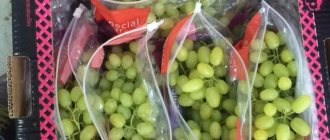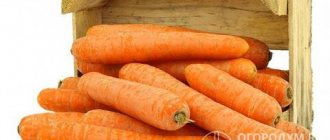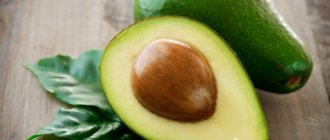Growing vegetables for the winter requires proper organization of their subsequent storage. A careless attitude to this issue can lead to damage to the harvest.
Beets are one of the popular harvested crops, and this vegetable can be stored in the cellar not only until spring, but also until the next harvest.
We will tell you further about how to store beets in a cellar or basement until spring.
Winter storage rules
Planning for planting beets that will need to be stored in the cellar all winter begins with choosing a variety.
It must be suitable for the climatic zone and belong to late- or mid-ripening . The shelf life of such crops is much higher than that of earlier crops.
It is equally important to create conditions in your cellar suitable for storing beets.
Temperature
The temperature in the cellar is one of the very important indicators. For beets, the best option is from 0ºС to +2ºС. If the temperature drops lower, the vegetables may freeze; if the temperature is higher, the beets will begin to sprout, losing moisture, becoming soft and not as tasty.
Humidity
A humidity level of 85% to 90% is suitable for storing beets . This range will not allow the vegetables to rot, and, at the same time, will not allow them to dry out.
Beet description
The culture has a centuries-old history. The root vegetable has long been used for cooking. In the 19th century On the table of the ancient Slavs, beetroot replaced traditional turnips and was used as the main ingredient in many dishes.
Buryak is a perennial plant, but is often grown throughout the country as an annual. Both parts of the plant are used for different purposes. The tops or aerial parts are greenish-brown leaves with large veins. The root crop, located underground, is the most juicy and nutritious part of the plant.
The tops have long been used to prepare traditional Russian cold soups, and the rhizome was considered a raw material for the manufacture of medicinal compositions. After the emergence of various varietal species, the use of plant parts was reconsidered. Leaves and roots began to be used for preparing first and second courses, and also used in the treatment of various diseases.
Buryak is 80% water. 10% is carbohydrates, a small amount of proteins and fats. The peculiarity of the plant is the presence of coarse fiber, which contributes to the natural healing of the body, cleansing it of waste and toxins. Beets are rich in folic acid, which is necessary for full growth and development. The roots and leaves contain high amounts of manganese; this element is difficult to find in plant materials.
Of particular value lies in the increased content of betaine; it has a positive effect on hematopoietic processes, helps to increase the elasticity of blood vessels, which reduces the risk of developing dangerous conditions characterized by cardiac dysfunction. The aerial part is rich in ascorbic acid, essential vitamins and amino acids.
The plant germinates from seeds sown in spring without additional cultivation of seedlings. Harvest occurs at the end of July - mid-August. Some late varieties are harvested in the second half of August or the first half of September. To grow, the crop requires an open sunny area and a temperature range of + 15°. The seeds germinate a few days after planting. The germination rate of planting material prepared taking into account technological methods is quite high. For ripening, it is necessary to carry out regular watering, weeding, and several feedings to improve taste.
The main difficulty after cultivation, when harvesting the crop, is storing beets for the winter in the cellar. If the basic requirements are not met, it becomes soft and loses its beneficial properties. Many gardeners have doubts about this. How to store beets in winter: in the basement or on the balcony. What method to choose for those who do not have the opportunity to store beets in the cellar in winter, taking into account the characteristics of this crop.
Preparing root vegetables
One of the conditions for successfully preserving the harvest is proper preparation of root crops. It includes several stages.
Harvesting
Ripe beets should be harvested correctly. This should be done in such a way that the tubers are damaged as little as possible. To cultivate the beds, forks can be used for digging, and small shovels can be used to remove vegetables. The optimal harvest time is cool, dry weather .
Drying
Vegetables removed from the ground should be thoroughly dried to remove excess moisture. It is best to do this under shelters in warm weather with low humidity. For drying, it will be enough to withstand the crop for several days.
You can tell that the beets have dried out by the condition of the soil that has stuck to them. If lumps of soil easily fall off the tubers without any effort, the beets are ready.
Otherwise, the vegetables are left to lie under the canopy for a little longer. Drying for too long can cause the fruits to begin to wilt , losing moisture.
Removing tops
Beets are sent for storage without tops. To do this, it is cut off, leaving a few centimeters. At the same time, the root crops are shaken off of excess soil. The lower root is not cut off when preparing the harvest.
Sorting
After preparation, the harvested crop should be sorted. It is advisable to select fruits of approximately the same size, without damage, for a long stay in the cellar. Damaged vegetables are not sent for storage . Small ones are poured into a box and used first.
Harvest
The shelf life of a vegetable can be affected by the harvesting process. The root crop is located underground, so you need to choose a day when the weather is warm and sunny.
Important! If the fruit freezes, the damaged area will begin to deteriorate, and storing the vegetable will be problematic.
The collection technology itself is also important. You need to do all the work as carefully as possible so as not to damage the root crop. Using a pitchfork or shovel, carefully dig up the soil under the vegetable and just as carefully pull the root vegetable out of the ground by the tops.
In this video you will learn more about storing beets:
How to prepare the storage?
Proper preparation of the cellar room should include high-quality waterproofing and air venting so that optimal humidity and temperature are maintained.
When arranging through holes, protection against rodents must be provided. The purpose of waterproofing is to prevent possible flooding by groundwater and rainwater.
This point must be taken into account at the stage of creating the structure. For example, organizing a good drainage around the perimeter of the building .
Before placing a new crop in the cellar, the room should be inspected and, if necessary, repaired and ventilated. It is also important to remove the remains of last year's harvest and debris. If necessary, treat with bleach for sterilization.
Methods and terms
There are several ways to store beet harvest in the basement. A specific option should be selected taking into account existing conditions and opportunities. Beets are a fairly unpretentious vegetable that can be stored well in the basement not only until spring, but even longer.
Sawdust
Keeping vegetables in sawdust allows you to preserve the harvest for a long time. This method is suitable for finding crops in winter, since sawdust retains heat well. For compactness, you can arrange sides near the storage area in the cellar, or use drawers.
Paper bags
Beets are poured into large paper bags so that 1/3 of the volume remains empty. You should not cover them with anything on top. As in the case of sand, the method is based on the property of paper to absorb moisture . The storage method in bags is suitable for preserving a small harvest.
In sand
To preserve the harvest, boxes or boxes are prepared, bounded by boards, in which the beets are stored sprinkled with sand. Boxes can be not only wooden, but also plastic. But in the latter case, it is important to ensure that they have a sufficient number of holes.
This option is suitable for regions where there are no severe frosts that can lead to freezing of sand and, as a result, damage to root crops.
A layer of sand is poured onto the bottom of the boxes or fences, and beets are laid out on top. And again sand is poured so as to cover the vegetable.
The boxes can be stacked on top of each other in such a way that air access is maintained. In such conditions, root crops can remain for up to a year or even more. The method using sand is based on its ability to absorb excess moisture.
Plastic bags
If space in the cellar is limited, then you can compactly place the harvest by pouring it into large plastic bags . It is necessary to make a sufficient number of holes along their entire surface so that condensation does not appear inside.
You can also add a little sawdust inside the bags to combat moisture. In this package, the vegetable can sit until spring. But it will be necessary to periodically check the condition of the crop to prevent rotting.
Polyethylene is not the best packaging for beets. If possible, it is advisable to use other methods, since vegetables are stored worse in film and may spoil before spring.
If moisture is noticed inside the bags during beet storage, the crop must be dried and placed in another package.
In a heap on the floor
This method of preserving the harvest is the simplest in organization . The beets are laid out in a pyramid on a dry floor pre-treated with a disinfectant. For better preservation, there should be larger vegetables at the bottom, then smaller ones.
The top of the folded pyramid can be covered with straw and earth. In such conditions, the crop can be stored until spring, but it is necessary to control the condition of the root crops.
Wicker baskets
Beets prepared for storage can be placed in large wicker baskets. They can be installed on the floor, on shelves or wooden platforms.
The top of the vegetables can be covered with straw or pine needles . In a non-damp basement without the threat of freezing, the beet harvest in baskets can be stored not only until spring, but even until the next season.
When to harvest red beets
Red beet root crops are collected only in dry weather to prevent the spread of rot. The exact timing of harvesting is determined based on the climatic characteristics of the region where the crop is grown, but in any case, it is better to complete this event before the first winter frosts. In the middle regions this may be mid or late October, and in the southern regions it may be early to mid November. Beets are stored much better in the ground than in the basement, so during dry and warm autumn, gardeners prefer to leave them in the soil for as long as possible.
How to increase the shelf life of a product?
Despite the fact that beets are vegetables that store well, there are techniques that can be used to further extend the shelf life of the crop and avoid rotting.
Salt
Pre-treatment of root crops with saline solution will help increase the shelf life of harvested beets and prevent the appearance of rot. It is prepared based on the proportion: 10 grams of salt per 1 liter of water.
After processing, the beets are dried and only then sent to the cellar. This technique allows you to extend the shelf life of the product until spring without spoilage .
Phytocides
Plants with a high content of phytocides are natural disinfectants. They prevent the development of pathogenic microflora, including fungi and mold.
These plants include:
- horseradish;
- fern;
- basil;
- sagebrush;
- mint and some other types.
It is very simple to use such plants - they can be used to line the bottom of drawers or put them next to the storage area in the cellar.
Possible problems and ways to solve them
When organizing the storage of beets in the cellar until spring, you may encounter a number of problems:
| Problem | Ways to solve the problem |
| After harvesting beets, it rains, which prevents the vegetable from drying quickly | If the weather is rainy, it may take a few more days to dry. |
| An unpleasant odor appears in the cellar | The reason may be a violation of containment conditions or improper preparation. If there is a smell of rot, the crop should be sorted, removing spoiled root crops. You should also check the condition of ventilation, and whether there are fruits and vegetables adjacent to the beets, which impair its keeping quality. |
| Frozen vegetables | They cannot be sent for storage |
| Phimosis | Violation of the rules for growing vegetables, for example, excess fertilizer or poor watering. Cannot be sent for long-term storage |
| Fungal infection of fruits | The cellar will need disinfection |
| Germination of tops | The temperature regime in the basement is disturbed, the temperature is too high |
What to do to prevent beets from rotting
Taking care of harvesting and storing crops is a whole science that remains completely unmastered. Sometimes minor factors can affect the safety of root crops. What to do to store beets correctly so that they do not rot or turn black - not every experienced gardener can answer these questions.
One of the secrets to successful storage over time has been consistent adherence to the preparation steps. In order to minimize the risk of rotting, additional measures are taken: the lateral shoots are removed, the tops and the lower root are trimmed. It is on these parts that foci of infection form.
If a rotten specimen is discovered, the vegetables are scattered for inspection, and infected elements located in the neighborhood are discarded. Then they are dried, the tendrils are trimmed if necessary, the material is changed, and the laying is repeated.
Which vegetables and fruits can be nearby and which cannot?
Storing vegetables and fruits together in the same basement is often very difficult. When placing beets, you can organize their successful proximity to potatoes .
In a joint planting, potatoes should form the bottom layer, and beets should form the top. In this case, it is better to keep carrots separately, as they contribute to the rapid spoilage of beets. Suitable companions for storing beets together in the same cellar are onions and garlic.
Recommendations
When storing harvested beets for a long time, it is important to remember the basic advice of experts:
You cannot dry vegetables in the sun - only under a canopy, in a draft.- Storage containers should not interfere with good ventilation.
- The cellar should not be stuffy and damp.
- The harvest in storage should be sorted every 15-20 days during the entire period of being in the cellar.
- Beets should not be washed before storing - just shake off the soil from them.
- Digging up beets too early will prevent the root crops from accumulating enough nutrients and will reduce their nutritional value.











